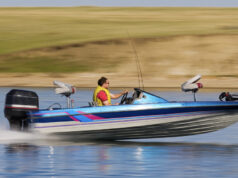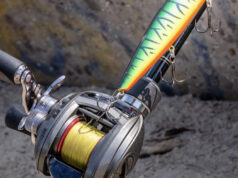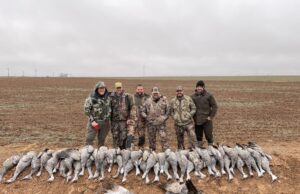by Terry Robertson
Catching hot weather bass can be an intimidating task. Fighting the southern heat is just part of the aggravation; locating and getting a lethargic old bass to take the bait is another trick.
When the summer temperatures max out, the bass tend to stabilize in the standing timber and deeper structure. Targeting timber when the water gets hot will lead to more bass in the livewell. Most of the lakes we fish have plenty of standing timber to choose from. I have a real problem when standing on the deck overlooking a large area of concentrated timber. Every single tree looks like “the one” that will be holding a big bass. Sadly, that’s not the case. The bass will, generally, be concentrated in certain parts of the timber, and not in others. The angler must be able to narrow down the best areas to fish, as there is no way to fish it all.
Disecting The Timber
As mentioned above, all of the standing timber will not hold fish. Certain areas will hold the majority of catchable bass. I begin by reducing the size of my playing field to areas I believe are more likely to hold fish than others. I decide this by looking at the contour map, then by easing around the area while graphing, looking for structure like humps, flats, dropoffs, creek channels, rock piles, points, and such that are in or near the standing timber. I also look to locate areas where the predominant species of tree changes. When you find an area where the tree makeup changes from one species to another such as from cedars to hardwoods, this indicates a terrain change. The line is easy to see once you program yourself to look for it. After reducing the timber to a few smaller target areas, I begin to reduce the size even smaller.
Zeroing In
Now that I’ve reduced the size of my playing field to a more manageable size area, I want to cut it down further. It’s time to wet a hook. Water clarity, temperature, and available cover will determine whether the bass are suspended or on bottom. Depending on the depth, I will choose a bait that allows me to quickly cover ground inside my newly marked target areas. If in the 6 to 12 foot depths I may fish a mid-range squarebill crankbait, or swimbait. In deeper water I may start with a deep-diving hard crankbait. I want to choose a bait that gets to depth quickly, that I can fish at a fast pace and cover ground quickly. I then fish the shady side of the standing timber concentrating on the larger trees or trees that still have limbs above the water. I cast past the target and bring the bait as close to the tree as possible. If you can bang the bait against the tree trunk or limbs as you fish it, all the better. I continue through my newly marked playing field until this produces a bite. Often times, when you find one summertime bass, you have found a school of them. The others will be hanging out at a similar depth as the first one. These bass don’t want to work too hard for a meal. They are waiting for an easy ambush as the baitfish ambles by.
Making It Happen
Now, it is time to get serious. You’ve identified an area and gotten bit by a bass. I generally would have a 7 foot heavy rod Texas rigged with a standard size Zoom Brush Hog, Berkley Power Worm, or a Jig with a Sweet Beaver trailer. First, slow down. Sometimes it is difficult to transition from quickly covering water to settling down and fishing. Patience is now key. Now is the time to pick apart the area. I choose the larger trees that offer the most shade and cover, or trees that differ from the others in some way. I try to catch an angle that allows me to cast past my target tree to another that lines up behind it and cast to the second tree. I allow my bait to settle paying close attention to the fall. Keep in mind that many times the bite will come on the original fall on a slack line. When not paying attention, you may miss a bite, or give the fish time to wrap up on the submerged cover. If I get no bite, I fish the bait back to me, right past the original target tree. I try to lift the bait and allow for another fall by this tree, and if I can bang the bait on the tree trunk, limbs, or exposed root system, all the better. The goal is to get your bait in close to the cover so the bass doesn’t have to leave far from his shady ambush spot to snag his meal. Again, be patient and work the area thoroughly. When you get that bite, be sure to get a good hook set and get its head turned quickly to avoid getting hung up.
Locating hot weather bass is sometimes a chore, but luckily, often times finding one means finding a school. The standing timber is a great place to fill a bag. The only thing left to do is to DO IT! Ice down some drinks, put on some sunscreen, and hit the timber for some summertime bass.












